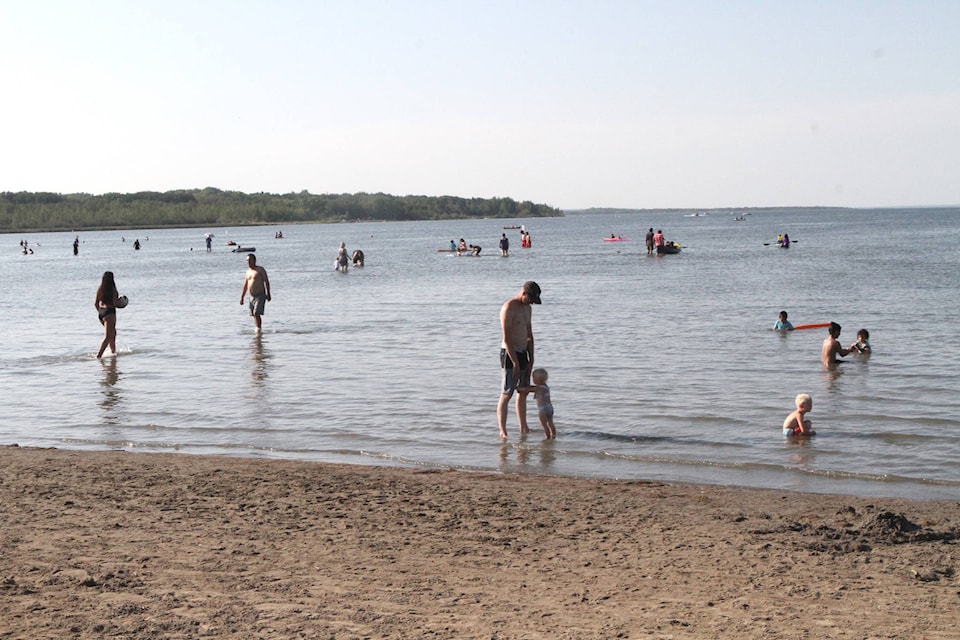The public health advisory for Aspen Beach at Gull Lake remains in effect.
After Alberta Health Services issued a water quality advisory on July 31 about elevated fecal bacteria levels in the lake, they are still unable to determine the cause of the contamination.
Dr. Ifeoma Achebe, the lead central zone medical officer of health, said Tuesday they have continued to test weekly in August, but have not seen consecutive “satisfactory results” in the levels of bacteria.
“Usually, we look for two consecutive satisfactory results before we lift (the advisory). So far, we don’t have that,” she said.
They typically wrap up testing lakes as the summer comes to a close, so they will still have a few more chances to test this month.
Achebe speculated on the source, saying there are a number of likely causes, but the lab tests haven’t been conclusive through August.
“It’s difficult to determine what the cause is. It could be from animals, could be from humans, it could be contamination from sewage,” she said.
Local resident Kevin Lundie said he has written to all forms of government, including AHS, searching for an answer.
“Is it too much to ask for the results? I am asking all central Albertans who are concerned about the water quality to ask for the truth,” he said.
“Once it is disclosed, we can make the changes necessary to protect the watercourses.”
Achebe said she understands the frustrations of local residents and hopes they can have an answer in October or November.
Some visitors to the beach were also concerned about a lack of signage warning swimmers about the fecal bacteria levels.
An AHS spokesperson said signs were posted at Aspen Beach by environmental public health, and an employee also visited a second time to put up additional posters.
“Typically, signage is posted in multiple high-visibility locations such as entrances to, and directly on, beaches, washrooms/change rooms, etc.,” the spokesperson said.
